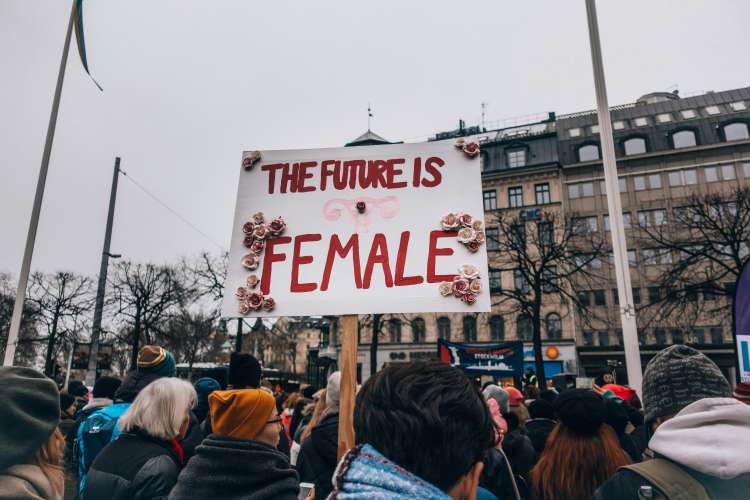
Women empowerment: Today’s women may be living materially better lives than their mothers or grandmothers, but this alone cannot be mistaken for gender equality. True women’s empowerment must go beyond incremental gains to address structural inequities that continue to define the lives of millions of Indian women.
The recently released State of World Population Report 2025 by the United Nations Population Fund (UNFPA) makes it clear that India needs to adopt a new paradigm—one that integrates women’s empowerment with public health and family welfare. These are not parallel goals. Empowered women are more likely to make informed decisions that benefit their families and communities.
READ | Crude oil prices threaten to derail growth, inflation goals
The core message from the report is unequivocal: development without freedom—particularly reproductive and financial freedom—will remain incomplete.
From patriarchy to policy gaps
India continues to rank poorly on gender indicators. The country is placed 129th out of 146 countries in the Global Gender Gap Report 2024, reflecting deep-rooted disparities in health, education, and mobility. While the government has made strides in improving female literacy (up to 70.3% as per the 2021 Census), high dropout rates—driven by child marriage, poverty, and social norms—persist.
According to the National Family Health Survey (NFHS-5), 23% of Indian women aged 20–24 were married before age 15. Such practices, alongside dowry-related violence and female foeticide, highlight the cultural barriers that undermine policy efforts. Even in urban, educated households, a preference for male children remains deeply entrenched, contributing to India’s skewed sex ratio.
The social cost of such inequality is borne early. Girls are often denied equal access to nutrition, healthcare, and education. Gender stereotyping begins at home, and daughters are too often viewed as economic burdens. The belief that investing in girls is futile results in a vicious cycle of disempowerment.
Economic independence and reproductive rights
Empowerment begins with education and culminates in financial independence and bodily autonomy. Yet, women’s labour force participation in India remains dismally low—just 41.7% in 2023–24, per the Periodic Labour Force Survey (PLFS). Rural women frequently engage in unpaid or informal labour, while urban women face glass ceilings across sectors.
Initiatives like the National Rural Livelihood Mission (NRLM) have helped millions through self-help groups (SHGs), but challenges persist: wage gaps remain wide, childcare support is limited, and women often lack access to formal finance. On average, Indian women earn 20% less than men for similar work.
Reproductive rights are another neglected dimension. While India’s average total fertility rate has fallen to 1.9 births per woman, states like Bihar, Uttar Pradesh, and Jharkhand continue to post fertility rates nearing 3.0. Inadequate access to family planning services has real consequences—36% of Indian women report having experienced unintended pregnancies, while 30% were unable to conceive when they wanted.
These figures reflect more than statistical anomalies—they indicate widespread reproductive insecurity rooted in poor healthcare access, lack of agency, and social inequality.
Women empowerment: Systemic change, not symbolism
Health remains a critical concern. Women continue to deprioritise their own well-being in favour of family members. An estimated 50% of women of reproductive age suffer from anaemia, and the incidence of breast cancer among younger women has been rising steadily since 2000.
The UNFPA report rightly calls for a public health approach that targets structural barriers—malnutrition, education gaps, housing inadequacies, reproductive health services, and restricted mobility. Yet, government investment in this space remains limited. Gender-specific allocations account for just 5% of India’s 2024–25 Union Budget. Without a commitment to gender-responsive budgeting, well-meaning policies will continue to fall short.
Social change is equally essential. Cultural attitudes that confine women to caregiving roles or treat them as secondary citizens must be challenged. Public campaigns must shift perceptions as much as policies shift outcomes. The popular adage still holds: educate a man, and you educate an individual; educate a woman, and you uplift a family—and, by extension, a society.
Towards an inclusive future
Empowering women is not the responsibility of women alone. It requires a collective social will—families, communities, governments, and men must all play a role. Mothers play a crucial role in shaping values of gender equality early in life, but this effort must be reinforced by laws, systems, and public discourse.
India’s progress is undeniable. There has been a rise in women’s literacy, growing political representation, and stronger participation in community institutions. But the road ahead is long.
Women’s empowerment is not just a social or moral imperative—it is a strategic one. A country that seeks to become a global economic and political leader must first ensure that half its population has an equal stake in its progress.
